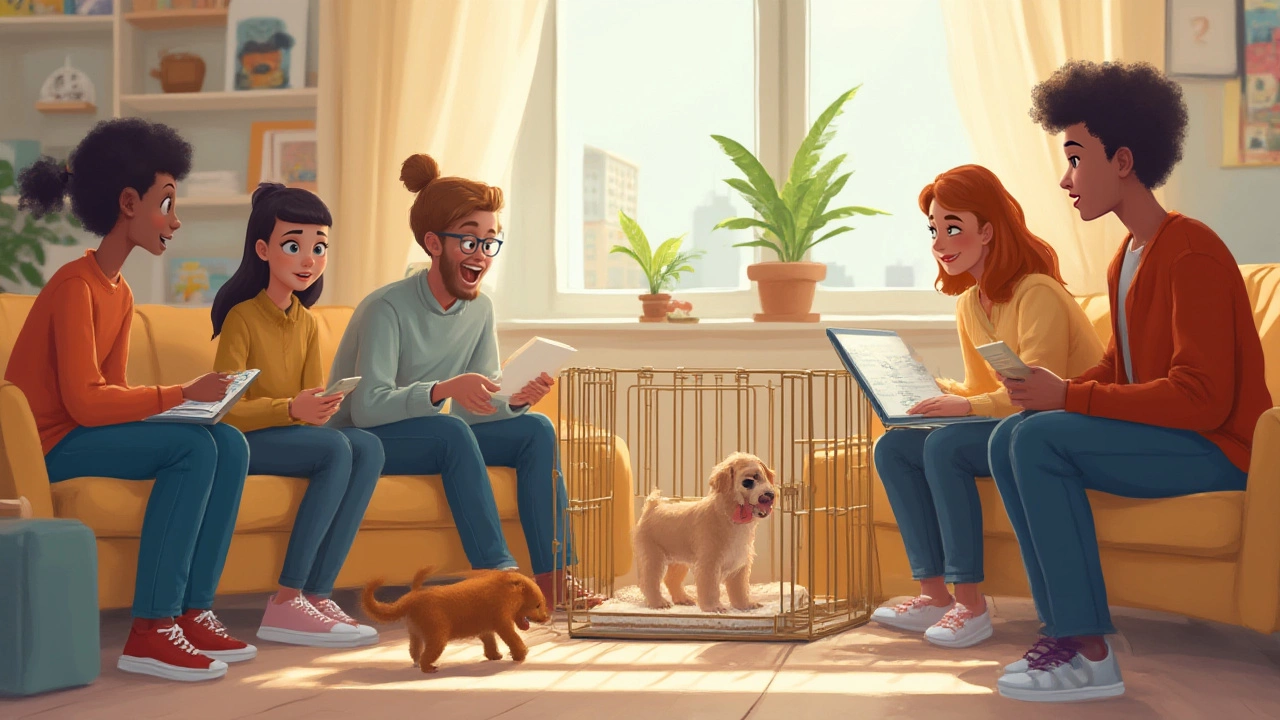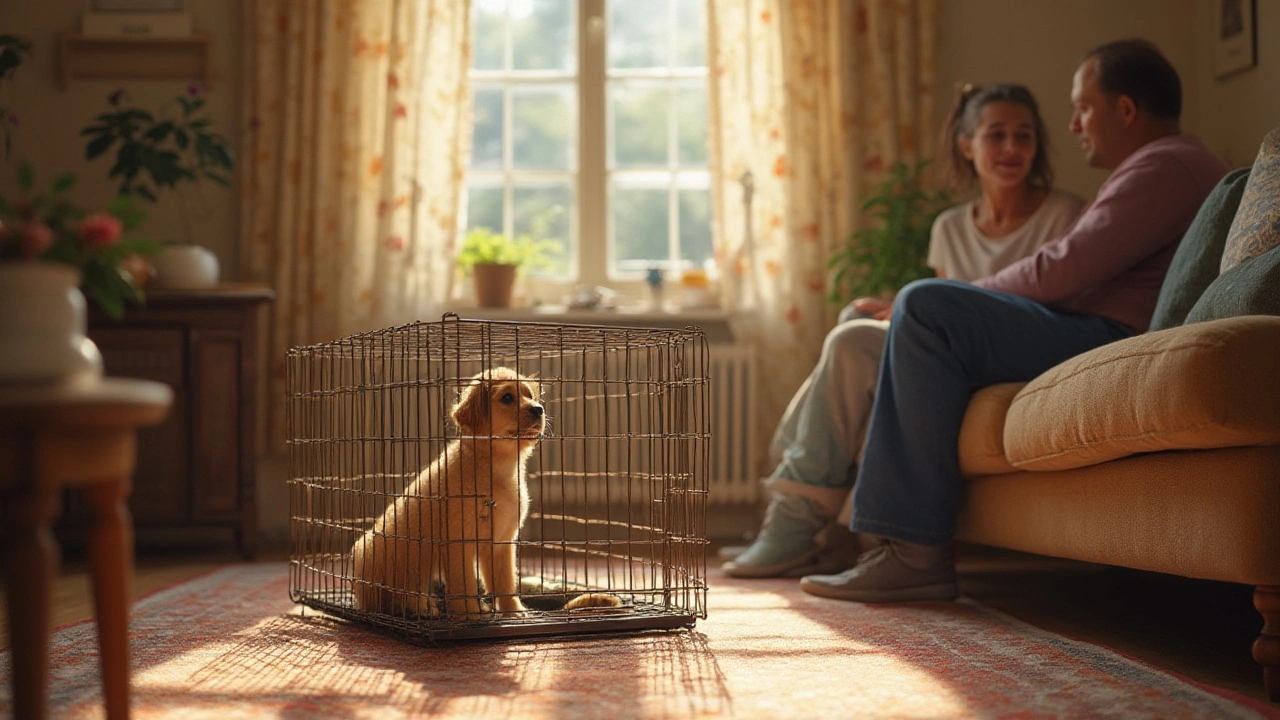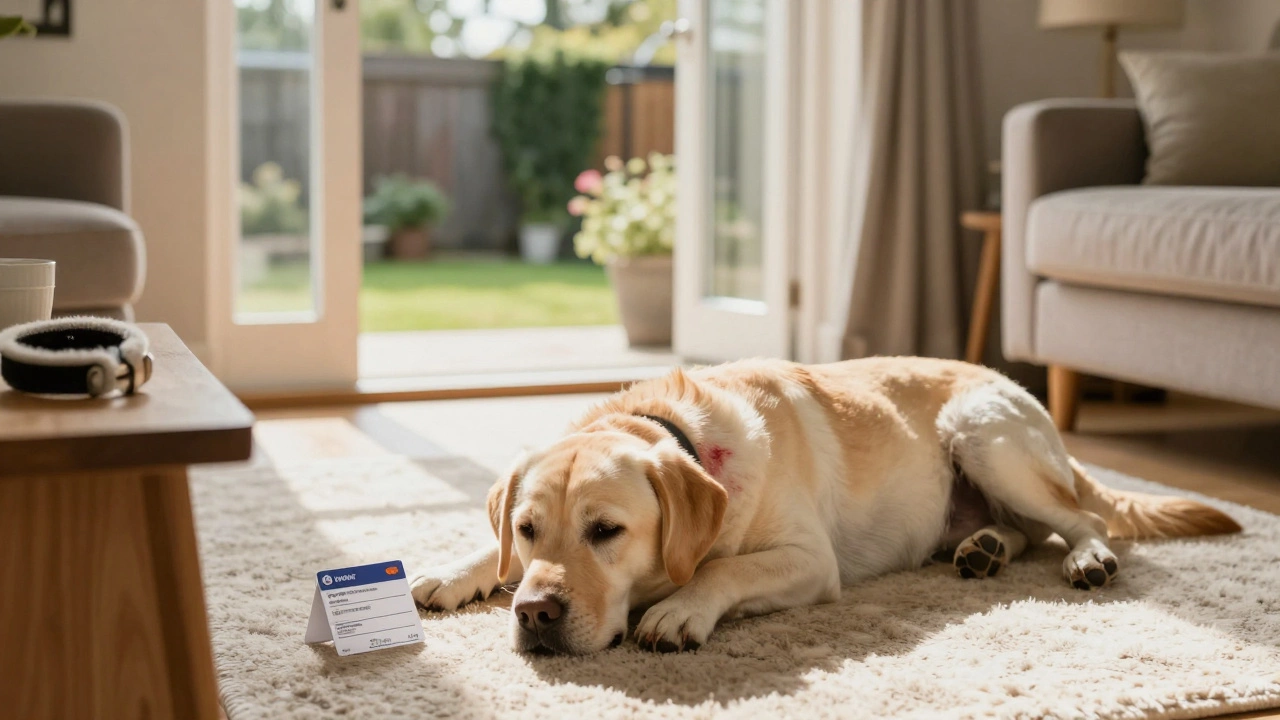If there’s a sound that can split your nerves like a lightning bolt, it’s your puppy barking from inside their crate—relentless, desperate, and sometimes toe-curling. Plenty of new dog owners sit on the edge of their bed at 1AM, Googling, “Should I ignore puppy barking in crate?” while their fluffy best friend sounds like it’s auditioning for an ambulance siren outside the bedroom. You’re not alone. More dog owners hit this late-night decision point than you might guess. What’s wild is, how you respond could be the make-or-break moment for your puppy’s sense of safety—and your own sanity. Let’s break it down so you can get everybody some sleep and keep your puppy’s tail wagging.
Why Puppies Bark in Their Crates—and What It Means
Crate barking isn’t just noise. It’s a message, and often it’s got layers. Puppies bark when they’re scared, lonely, need to potty, or just don’t understand what’s happening. During the first few nights, their world’s been flipped upside-down: new smells, strange shadows, weird noises, and now… confinement. Imagine being five years old, in a room with the door closed, not knowing if Mom will come back. For your puppy, the crate is a new universe and the only way to talk is to bark or whimper.
Studies from animal behaviorists—like Dr. Ian Dunbar and Sophia Yin—show that puppies under twelve weeks deal with separation more like toddlers than grown dogs. They rely on their humans for every basic need. If you just power through the noise, refusing to go to them as many “tough love” guides suggest, you might miss subtle cues: that bark at 3AM could be fear, or a real potty emergency. Ignoring true need can backfire. When puppies aren’t listened to, stress chemicals shoot up in their brains. A University of Bristol study in 2022 measured cortisol (the stress hormone) in puppies left to bark unchecked—levels soared higher than after routine vaccines. That’s not just a little drama, that’s physical distress.
But here’s the thing—some barking is just testing boundaries. Say you opened the crate door every time there’s a yelp. You’re teaching your puppy that making noise gets you there, and soon you’re the one trained. Consistency is everything, but so’s reading the situation. Is this an emergency or just drama? That’s your new parenting superpower: the ability to decode the difference.
The Risks of Ignoring the Barking Completely
The internet is filled with hardline advice: “Ignore! Never go back!” Sure, if your puppy barks and you reward that barking, you’re making things worse in the long run. But here’s where people mess up—blanket ignoring can cause big issues. Puppies aren’t robots. If you always ignore, puppies can spiral into panic, which paves the way for bigger behavior problems. Destructive chewing, separation anxiety, or crate hatred might root themselves in a matter of nights.
Check out this data from an AKC (American Kennel Club) survey in 2024: out of 1000 owners dealing with crate-training and nighttime barking, 73% who ignored barking saw it drop within the first week, but the rest reported ongoing crate issues or increased anxiety for months. Another 19% of “total ignorers” reported their dog developed fear of the crate that never fully went away, even years later. If you notice your puppy barking but also panting hard, drooling, or tearing at the crate, that’s panic, not stubborn “talking back.” If the barking triggers a potty accident, it’s another sign it wasn’t just drama.
Here’s another overlooked angle: puppies under 12 weeks have tiny bladders and may need a bathroom break every 2–3 hours at night. Ignoring night barking could mean you’re setting your pup up for accidents in the crate—which no one wants, and it can actually set house training back by weeks.
Take a look at the table below. It summarizes signs that suggest your puppy’s barking is something you should actually respond to.
| Puppy Behavior | What It Likely Means | Recommended Response |
|---|---|---|
| Sharp, quick barks after long silence | Needs bathroom break | Take puppy outside calmly and return to crate |
| Whining and scratching at crate, panting or drooling | Panic or fear | Soothe briefly, try comfort item, consider crate location |
| On-and-off whimpering, looks toward you | Seeking attention or reassurance | Wait for a break in barking, offer calm support |
| Barking immediately as soon as you leave the room | Separation distress | Practice short absences, gradually increase time alone |
Ignoring is not a one-size-fits-all answer. Recognizing what your pup is “saying” makes all the difference to a safe, calm crate experience.

Smart Strategies: Training Your Puppy to Love the Crate
If you’re picturing crate training as a dramatic battle of wills, scrap that thought. Puppies learn fastest with tiny steps and lots of rewards. There’s no shortcut around patience, but you don’t need to accept bark-filled nights as normal either. Want your pup to actually chill out in the crate? Here’s how the people who raise guide dogs or police pups do it:
- Make the crate awesome. Crate time should mean great things. Meals in the crate, favorite toys, treats sprinkled inside. A worn T-shirt of yours works wonders—your scent calms more than you’d guess.
- Start small, go slow. First day: let your puppy wander in and out with the door open. Next day: door closed for a few seconds while you feed treats. Build up to longer stretches only as they seem relaxed.
- Naps first, night later. Many trainers start with daytime naps or quiet crate breaks before pushing for overnight stints. Puppies learn crates are safe spots for downtime, not doggie jail.
- Break the silence cycle. If you know your pup’s not scared or desperate for the toilet, practice waiting for a pause in barking—whether two seconds or ten. Then calmly open the crate or offer attention. That small moment teaches them, “Quiet gets rewards.”
- Consistency, not cruelty. Keep a routine. Every time you cave to barking, your puppy gets mixed messages. But refusing caring support during panic moments backfires too. Aim for firm, loving boundaries.
Consider these two real-life differences: one family uses a covered crate near their bed the first three nights, only moving it to the corner after the puppy sleeps soundly. Another puts the crate in a far room and ignores all barking from day one. Guess which dogs adapt faster, cry less, and avoid long-term fear? The ones close to their people early on form positive crate associations—then transition to independence when they’re ready.
Check your crate setup, too. Puppies are den animals by nature, but they don’t love freezing cold metal or feeling exposed in the middle of a loud kitchen. Measuring your puppy, padding the crate with a soft mat, and using a light cover (never blocking airflow!) often works wonders. One tip trainers swear by: “good noises” like low-volume white noise machines or a ticking clock can help block scary outside sounds and make the crate feel cozier.
You’ll also want a schedule. Most pups do well with the 15/5 strategy: for every 15 minutes in the crate, allow a 5-minute play and potty break (daytime, of course). At night, be ready for a bathroom trip every 2–4 hours, gradually spacing them out as your puppy grows.
When to Get Help and Troubleshoot Crate Barking
Here’s the honest bit—sometimes, no matter what tricks you try, your puppy just won’t settle. Maybe your neighbor’s dog howled through his first year and now you’re worried you’ve got a canine opera singer. Or you’ve tried treats, T-shirts, and routines, but barking lasts for hours. Time for backup.
If your pup is barking for more than a couple weeks without progress—or if you see signs of severe anxiety like relentless drooling, bloody gums from chewing the crate, or even vomiting—it’s time to loop in a pro. Certified trainers and veterinary behaviorists see this every week and have a toolkit that goes beyond Google’s one-liners. Sometimes medical problems (like UTIs causing increased potty needs) masquerade as crate “bad behavior.” Rule out medical causes with your vet if you hit a training brick wall.
Every puppy is an individual. Some, like working breeds (think Border Collies or Malinois), have higher anxiety or react to boredom by barking. Others, like Cavaliers or Labs, settle in minutes. Know your breed, but expect surprises—personality matters more than you’d think.
Before you give up entirely on the crate: try changing locations, use a see-through gate for short times, or skip the “door lock” stage for a few days, especially if your puppy shows real panic. Switching from metal to fabric crates sometimes helps, too. For puppies who don’t bark when you’re home (but wail the moment you’re gone), separation anxiety protocols are your best friend—not a stricter crate approach.
And hey, celebrate small wins. If your puppy halves the barking night-to-night, you’re heading in the right direction. Keep notes of what works and what throws things off track—patterns often emerge if you step back instead of reacting in the moment.
No one swears by sleepless nights, but every grown dog that adores their crate started out with some kind of wobbly beginning. Stay flexible, trust your gut, and remember: the end goal isn’t a silent puppy—it’s a confident one that trusts you’ll have their back, even when they sound off in the dark.



